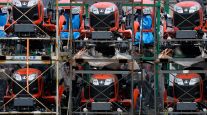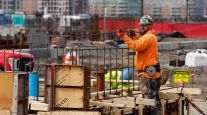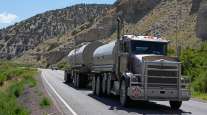Associated Press
US Economic Growth for Q2 Revised Down to 2.1%
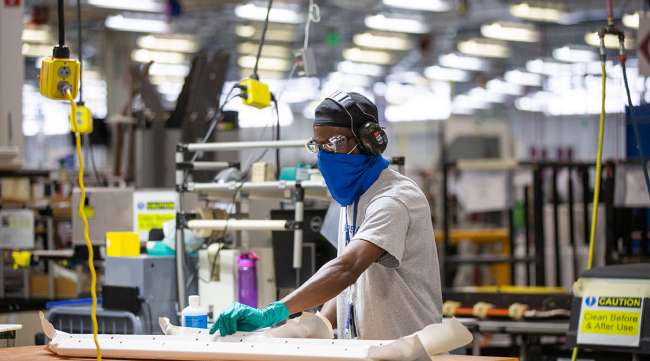
[Stay on top of transportation news: Get TTNews in your inbox.]
WASHINGTON — The U.S. economy expanded at a 2.1% annual pace from April through June, showing continued resilience in the face of higher borrowing costs for consumers and businesses, the government said Aug. 30 in a downgrade from its initial estimate.
The government previously estimated that the economy expanded at a 2.4% annual rate last quarter.
The Commerce Department’s second estimate of growth last quarter marked a slight acceleration from a 2% annual growth rate from January through March. Though the economy has been slowed by the Federal Reserve’s strenuous drive to tame inflation with interest rate hikes, it has managed to keep expanding, with employers still hiring and consumers still spending.
The report on the nation’s gross domestic product — the total output of goods and services — showed that growth last quarter was driven by upticks in consumer spending, business investment and outlays by state and local governments.
Consumer spending, which accounts for about 70% of the U.S. economy, rose at a 1.7% annual pace in the April-June quarter — a decent gain, though down from 4.2% in the first three months of 2023. Excluding housing, business investment rose at a strong 6.1% annual rate last quarter. Investment in housing, hurt by higher mortgage rates, fell in the second quarter.
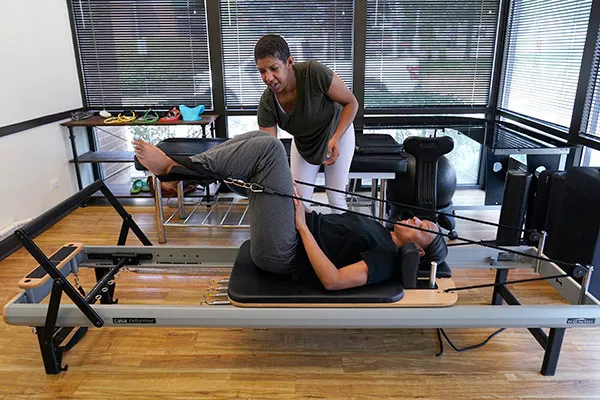
Healthcare instructor Aolion Doxie works with Jamila Thomas at Naperville Wellness & Salt Cave in Naperville, Ill., on June 8. (Associated Press/Nam Y. Huh)
The American economy — the world’s largest — has proved surprisingly durable in the midst of the Fed’s aggressive campaign to stamp out a resurgence of inflation, which last year hit a four-decade high. Since March of last year, the Fed has raised its benchmark rate 11 times, making borrowing for everything from cars to homes to business expansions much more expensive and prompting widespread predictions of a coming recession.
Since peaking at 9.1% in June 2022, year-over-year inflation has fallen more or less steadily. Last month, it came in at 3.2% — a significant improvement though still above the Fed’s 2% inflation target. Excluding volatile food and energy costs, so-called core inflation in July matched the smallest monthly rise in nearly two years.
The GDP report contained some potentially encouraging news for the Fed: One measure of prices — the personal consumption expenditures index — rose at a 2.5% annual rate last quarter, down from a 4.1% pace in the January-March quarter and the smallest increase since the end of 2020.

Ryan Manthir of Shell Global Solutions and Michael Grahe of Navistar discuss the future of the internal combustion engine. Tune in above or by going to RoadSigns.ttnews.com.
Since the Fed began raising rates, the economy has been bolstered by a consistently healthy job market. Employers have added a robust average of 258,000 jobs a month this year, though that average has slowed over the past three months to 218,000.
On Aug. 29, a report from the government added to evidence that the job market is gradually weakening: It showed that employers posted far fewer job openings in July and that the number of people who quit their jobs tumbled for a second straight month. (When fewer people quit their jobs, it typically suggests that they aren’t as confident in finding a new one.)
Still, job openings remain well above their pre-pandemic levels. The nation’s unemployment rate, at 3.5%, is still barely above a half-decade low. And when the government issues the August jobs report Sept. 1, economists polled by the data firm FactSet think it will show that while hiring slowed, employers still added 170,000 jobs.
The combination of tumbling inflation, continued economic growth and slower but steady hiring has raised hopes for a rare “soft landing.” That’s a scenario in which the Fed manages to conquer high inflation without causing a painful recession.
Want more news? Listen to today's daily briefing above or go here for more info
Some analysts have a less optimistic view. Ryan Sweet, chief U.S. economist at Oxford Economics, still expects the economy to slip eventually into a recession.
“There are several noticeable drags that will hit the economy later this year and in early 2024,” Sweet wrote in a research note.
He pointed to tighter lending standards, the effects of the Fed’s previous interest rate hikes, the expected drag from the end of federal stimulus aid and fluctuations in company inventories.
The government report, its second of three estimates of last quarter’s growth, will be followed by a final calculation late next month.


